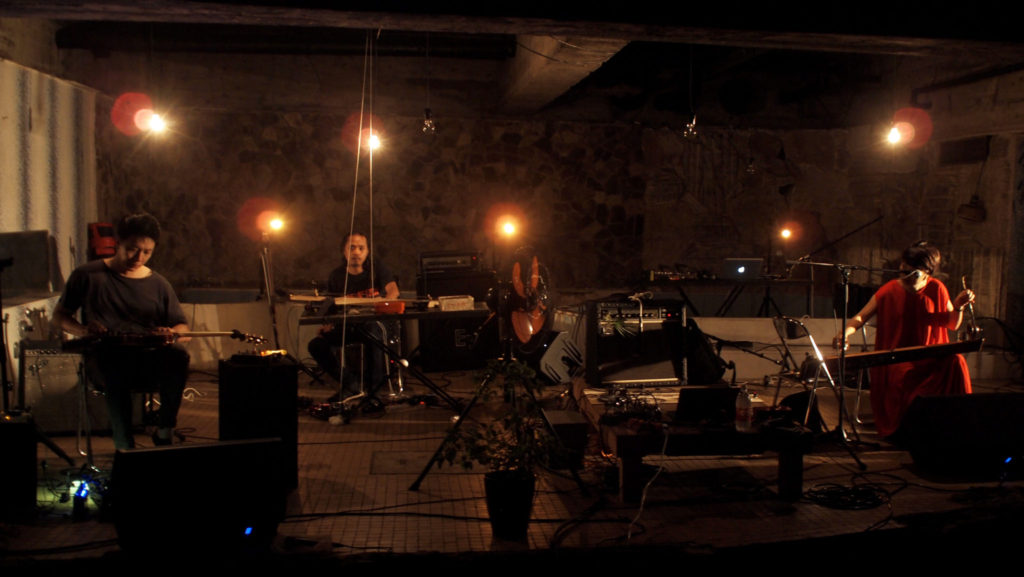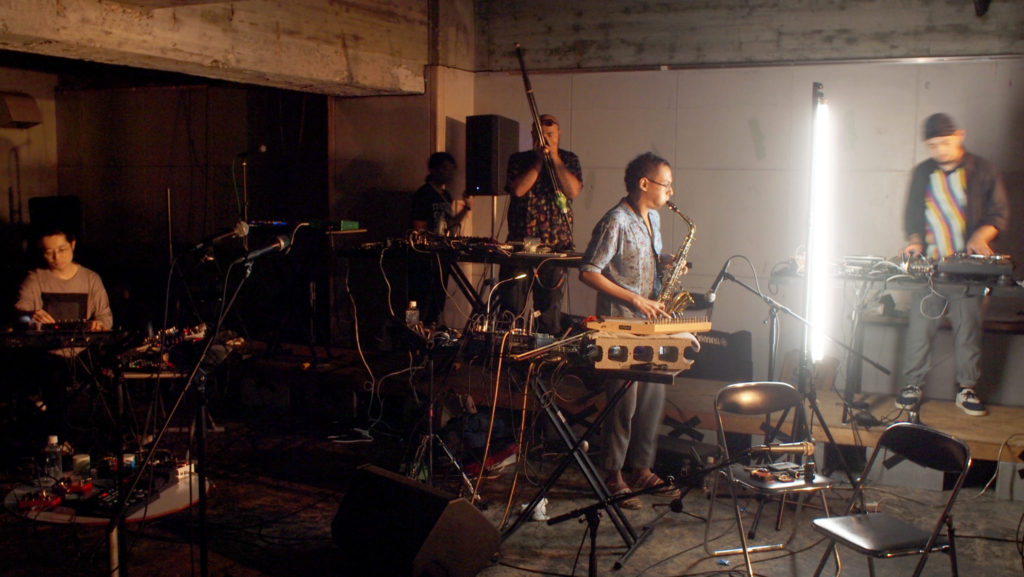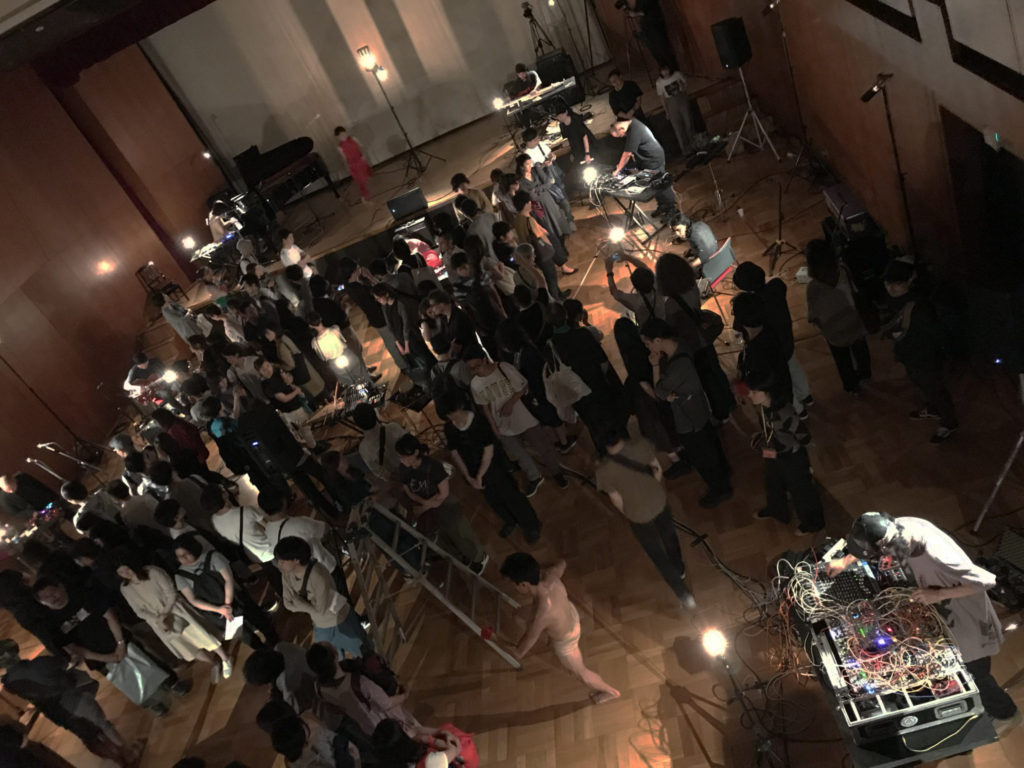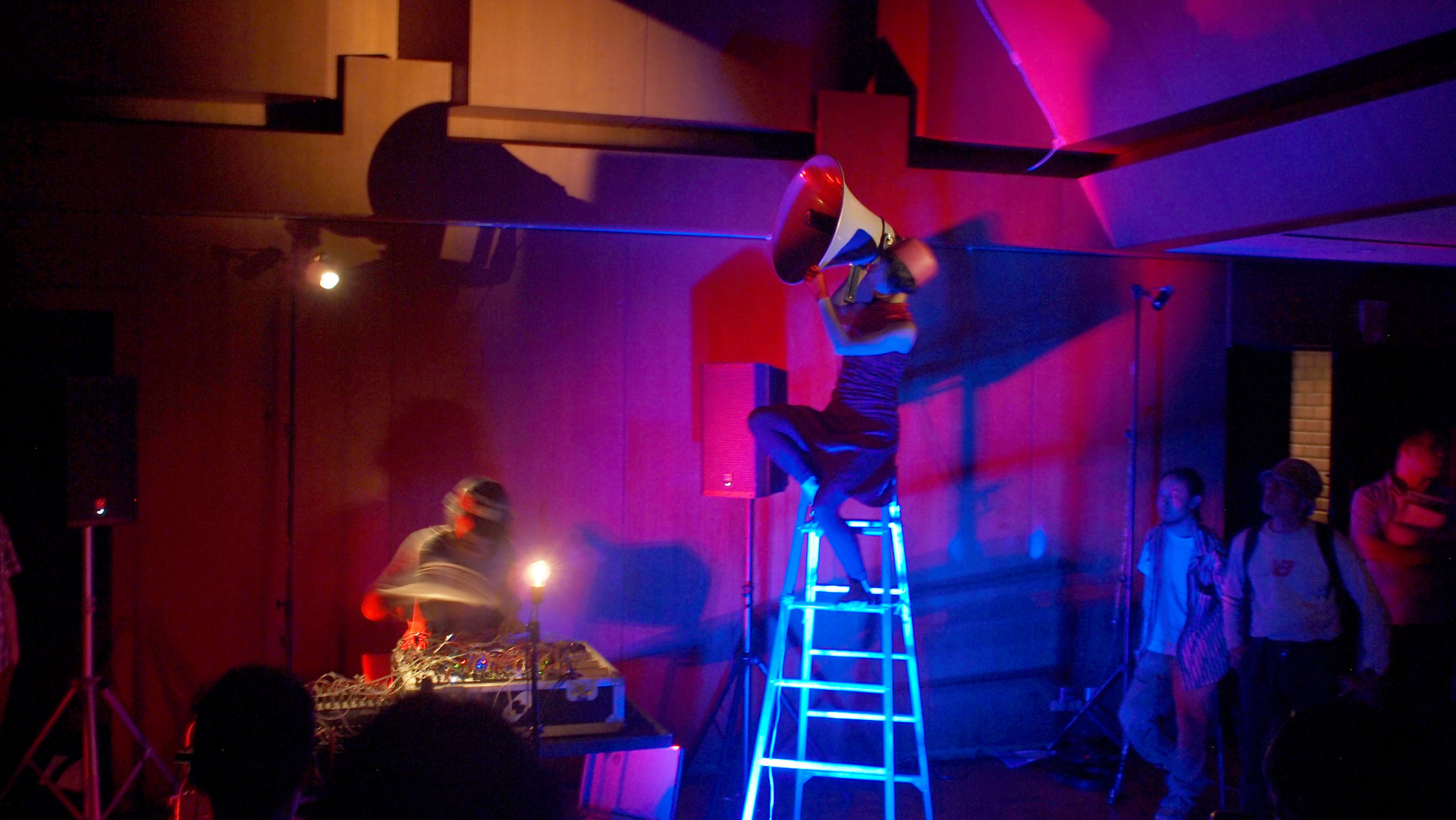Writer and music critic, born 1989. After completing Atsushi Sasaki’s critic training program Gips, he commenced his activities as a writer in 2013, and has since contributed to publications including ele-king, JazzTokyo, Jazz The New Chapterand Eureka. Essays include “New wave of improvised music – a disk guide for first encounters or initial thoughts” and “Towards the inevitable ’non-being of sound’ – The concrete and real music of Asian Meeting Festival.” Since May 2018, he has been hosting the “Explorations in post-improvisation” event series at M’s in Kokubunji.
photo: Takeshi Tamura
Started in 2005 by Otomo Yoshihide, the Asian Meeting Festival (AMF) was just held in Tokyo for the first time in three years. Since 2014, dj sniff and Yuen Chee Wai have been the main curators of this festival showcasing the best in experimental music from Asia. For about one week from July 1 to 6, this year’s concerts took place in a variety of spaces ranging from Japanese private houses to grand concert halls. In addition to high-quality individual performances, there were daily sessions by tour members dj sniff (Tokyo), Yuen Chee Wai (Singapore) and Otomo Yoshihide, featuring Senyawa (Rully Shabara & Wukir Suryadi, Jogjakarta), Ngo Tra My (Hanoi), Sheryl Cheung (Taipei), Dharma (Singapore), Pisitakun Kuantalaeng (Bangkok), and Seljuk Rustum (Kochi). Spending time together also outside the concerts meant for the artists a week of intensified exchange, which obviously resulted in the creation of music that came across increasingly intense as well. Here I’d like to focus on two concerts in particular, and look at parts of their respective processes.

photo: Takeshi Tamura
BUoY in Kitasenju, the venue on July 5, is a refurbished old public bath, and with some of the old features still remaining, its interior has something otherworldly to it. Special guests on this day were Killer Bong, Mitsuhisa Sakaguchi, and Shokuhin matsuri a.k.a foodman, each of whom appeared in trio or quartet sessions that filled the entire venue with intense noise, and constantly showered the audience with overwhelmingly powerful sounds. With speakers being placed rather far from the stage, for example, there was an interesting separation between visual aspects and auditory experience, whereas the voice ensemble conducted by Rully Shabara – the only acoustic set in the program – was a particularly unique presentation. About thirty people gathered in a workshop on the previous day mingled with the audience, where they suddenly began to growl while gradually stepping up to form a circle. The spectacular sound of their chorus was part of a performance that included everything from harsh noise to drone sounds and multilayered/multilingual recitals. Except for this one, all other sessions seemed to focus especially on the “act of performing,” and be it consciously or unconsciously, it appeared to me that this affected also the general direction of the following day’s event.

photo: Takeshi Tamura
On July 6, the venue was the Goethe-Institut in Akasaka. Special guests were Antibodies Collective, Eiko Ishibashi and Manami Kakudo. The audience was asked to gather in the lobby, and the door to the supposed hall remained closed even at the scheduled start of the concert. Instead, sounds of singing birds and bursting objects were audible from a distance. Wukir Suryadi, Otomo Yoshihide and Manami Kakudo performed while walking toward the center of the lobby, accompanied by a strange dance performance by Yoko Higashino and Kenjiru Bien from Antibodies Collective. The performers eventually guided the audience through the door and into the hall, where little stages were scattered around the entire place. After a while, a string of sessions in seamlessly alternating trio and quartet lineups started in a completely dark setting, before culminating in a concert with all performers. Scattered around the venue, the musicians each listened carefully to the sounds around them, and exquisitely calculated the timing of their own entry. Not a single person at the venue – including both performers and audience – was able to grasp a complete view of the performance, and the unparalleled spatial dynamics that were produced here certainly weren’t possible if everyone dedicated themselves to the “act of performing” alone. Following the previous day’s sessions, the focus had shifted from the “act of performing” to the “act of listening,” and I think this is exactly what paved the way for this successful effort.

photo: Takeshi Tamura
Ensembles like those at the Goethe-Institut had performed at various AMF venues before, and may be understood as a format that is unique to this particular festival. Group improvisations by performers scattered around the venue is of course a style that the likes of Marginal Consort have been doing for two decades, and looking for similar examples takes us even further back in time to John Cage’s “event” at Black Mountain College in 1952. But as a universal format that allows musicians with different backgrounds to get together and collaborate based on the methodology of improvisation, this surely was a truly unique attempt. However, if a similar concert had taken place on the opening day, the result might have been totally different. The “act of listening” here doesn’t only refer to the simple relationship between sounds and ears, but covers larger ground that includes also the process of spending a week together – as an “update” of the act listening so to speak. The two key ideas regarding processes and formats can be considered to be original fruits of AMF, and to connect these fruits not only within Southeast Asia, China and Korea, but to rather diverse networks that include also Russia and the Middle East, or even Europe, is an issue that remains on the agenda for future editions of the festival.
Translated by Andreas Stuhlmann
INFORMATION
Asian Meeting Festival 2019
Date: 2019 July 2 - July 6
Location: Denchu Hirakushi House and Atelier, BUoY, OAG-Haus
Organizers: The Japan Foundation Asia Center, Asian Meeting Festival Management Office
Supported by: Ibara City, Okayama Prefecture; Uenosakuragi Denchu Hirakushi House and Atelier; NPO Taito Cultural and Historical Society; Yanaka no Okatte (General Incorporated Association)









